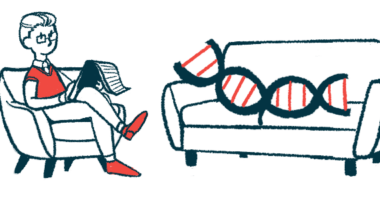In treating Angelman, the nose may be a nanoparticle ‘shipping’ lane
Researchers in Italy developed method to create less toxic chitosan particles

A team of scientists in Italy has developed new nanoparticles that could deliver therapies to the brain through the nose.
The effort was funded by the Angelman Syndrome Alliance as part of an effort to develop new brain-targeting therapies for Angelman syndrome.
The new particles were described in “Crosslinked Chitosan Nanoparticles with Muco-Adhesive Potential for Intranasal Delivery Applications,” which was published in the International Journal of Molecular Sciences.
The brain is surrounded by biological barriers that help keep it safe. These barriers can pose a problem when it comes to developing treatments for conditions like Angelman syndrome that affect the brain, since it can be difficult to get a therapy where it needs to go in order to be effective.
One possible route of delivery for brain-targeting therapies is through the nose, since the inside of the nose (called the olfactory epithelium) and the nerves that connect to it “work as a direct route for nose-to-brain delivery,” the researchers wrote.
Delivering Angelman therapy to the brain through the nose
Nanoparticles — tiny molecular ‘shipping containers’ that can be used to deliver medications — have been investigated for nose-to-brain delivery of therapies. A molecule called chitosan, derived from the same molecule that makes up crab shells, has been considered for nose-targeting nanoparticles because it’s very good at sticking to the mucus-covered olfactory epithelium. Prior nanoparticle formulations of chitosan were too toxic for routine use, however.
Here, researchers developed a new method to create chitosan nanoparticles with a better safety profile by linking the chitosan molecules together using molecules that aren’t as toxic as those used in prior formulations.
“We developed these [nanoparticles] envisioning repetitive intranasal delivery applications. We therefore purposely avoided the presence of any toxic or potentially toxic chemical in the NP formulation from the beginning,” the researchers wrote.
To test their safety, the researchers conducted cell experiments using either olfactory epithelium cells or nasal nerve cells. The novel formulation was markedly less toxic than older formulations, though it still showed some toxicity at very high concentrations, the results showed.
The new nanoparticle system “shows an interesting potential as a drug carrier for intranasal delivery,” the researchers said.







